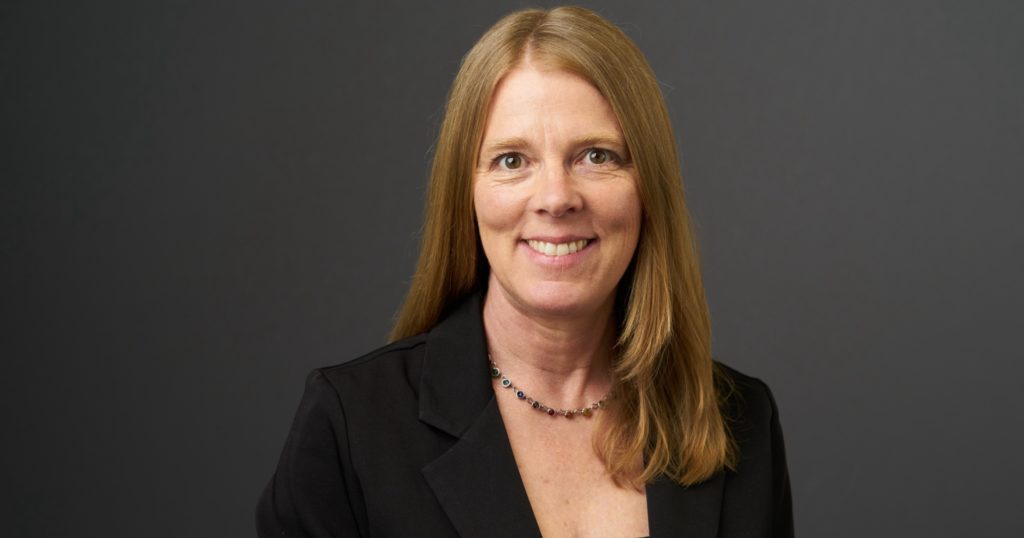The global energy transition is a complex challenge. People from all over the world are working together to collaborate for a better and cleaner planet. As Canada works to expand electricity and meet net-zero targets, hydropower will play a key role in creating baseload power and balancing the grid.
In preparation for the first-ever Global Hydropower Day on October 11, WaterPower Canada sat down with Debbie Gray, Climate Policy Manager at the International Hydropower Association, to discuss how hydropower is playing a crucial role in the energy transition and the discourse about equity, diversity and inclusion.
WPC: Debbie, could you tell us a bit about your background and your current role with the International Hydropower Association (IHA)?
DG: I am an environmental engineer with over 25 years of experience in the energy sector. I spent most of my career in the environmental department of the generation division at Hydro-Québec, gaining experience in pollution control, environmental and asset management, energy efficiency, and business development. I got to know IHA through my participation in one of their working groups, and always thought it’d be a great fit for me because I have an interest in international affairs and a passion for hydropower.
As Climate Policy Manager, there are three aspects to my role. The first is positioning hydropower as part of the solution to climate change. The second part of my role includes promoting tools, like the G-res tool, which is a free online GHG emission evaluation tool. Then the third part of my role is promoting IHA’s Climate Resilience Guide. This guide helps hydro operators evaluate and mitigate the impacts of climate change over time.
WPC: What would you say is the project you’re most proud of so far?
DG: Since I joined IHA I’ve had the opportunity to lead work on a study that examines the role of women in the hydropower sector. This initiative from the World Bank’s Energy Sector Management Assistance Program (ESMAP) is being delivered by IHA together with the Global Women’s Network for the Energy Transition (GWNET). The study explores gender employment gaps and provides recommendations to overcome some of the barriers women face in the sector.
I’m also a member of a steering committee for the Women in Hydro Mentorship Program and have proudly served as a mentor for the past three years. I’ve always been involved in trying to promote engineering as a good profession for women. When I went into engineering, my graduating class was 20 per cent women. The most recent stats from 2019 say that women represent 20.6 per cent of new grad engineers in Canada. It’s surprising to me that not much has changed in nearly 30 years. That part of my work – promoting, helping and advocating for women – is something that I’m quite passionate about. I’m proud of the work my colleagues and I have done in this space so far.
One of the biggest challenges is the perception that hydropower is not sustainable. There are some legacy issues with hydro. People think it’s still being developed the way it was almost a century ago. The truth is that today we have the tools to evaluate the parameters for much more sustainable projects.
Debbie Gray
WPC: Since IHA has a birds-eye view on the hydropower sector all around the world, what are some of the commonalities that you see in the sector, in terms of challenges and opportunities?
DG: When people think about renewables, they typically think wind and solar. Hydro has been called the forgotten giant of renewables, but we need backup for when the wind doesn’t blow, and the sun doesn’t shine.
Hydro is the best low-carbon energy source to balance the grid. It’s a wonderful opportunity and a large part of the solution for climate change. Unfortunately, it’s not always recognized by markets, which tend to pay for the energy only. We will clearly need the load balancing and flexibility that hydropower provides to complement variable technologies like wind or solar.
One of the biggest challenges is the perception that hydropower is not sustainable. There are some legacy issues with hydro. People think it’s still being developed the way it was almost a century ago. The truth is that today we have the tools to evaluate the parameters for much more sustainable projects.
Another challenge is that many plants in operation today, including several in Canada, are around 100 years old. I think that’s a good thing, because contrary to many gadgets used by today’s throwaway society, these are assets that last. I think there’s maybe a bit of a reputation that hydro is old and dusty, but there’s an opportunity to showcase the sophisticated technology that goes into hydro.
The hydropower sector must seize the opportunity to show the world what it has become and to assert its place as a crucial part of the solution to climate change.
WPC: How is IHA helping the industry address those challenges and opportunities – can you speak to some of the programs and tools you’ve developed? Which ones could be of particular interest in the Canadian context?
DG: IHA has a whole suite of sustainability tools that we’ve developed over the past 15 years. Now known as the Hydropower Sustainability Standard, these tools help measure the sustainability of a hydro facility during the planning, construction, or operation phases. It has also developed the G-res tool as a reliable and cost-effective way of estimating the emissions created from building a reservoir. It would be interesting for Canadian hydropower producers to use it so they can proactively understand their greenhouse gas emissions.
To complement these tools, there are a number of how-to guides ranging in topics from Indigenous consultation, and biodiversity, among others, which are valuable for any hydro developer.
Even in Canada, where hydro is a very mature and well-known technology, there’s always something new to learn. There are lessons in experiences, other contexts, or other parts of the world. For example, last year IHA worked with the U.S. Government on the International Forum on Pumped Storage Hydropower. Pumped storage is essentially a giant water battery, and it’s a great way to store electricity for days or weeks at a time. This technology is gaining more attention as the amount of variable renewable energy sources increases.
In addition, last year IHA released the Hydropower 2050 Report, which looks at modeling done from agencies like IRENA and the IEA. It’s a sobering exploration of what we’re going to need to get to net zero. Bottom line: If we want to get to net -zero, we are going to need more hydro, and we must start planning now. Projects can take upwards of 10 to 15 years to get to commissioning. We can’t wait until it’s too late.
WPC: How do you see the role of hydropower changing over the next few decades? (if at all?)
DG: I see hydro evolving from a technology that provided mostly baseload energy to providing a wider range of services. It will be relied on more and more to provide services like storage – be it through conventional hydro or through pumped storage – as well as to provide more services for grid stability in addition to baseload energy.
In a net-zero future, we’ll have to electrify more end uses such as transportation, industry, and heating. We’re going to need more electricity. Hydro will provide this energy and because it is dispatchable, it will be there when consumers need it, while also allowing the penetration of other renewables.
Sometimes it’s the things that seem little that actually make a huge impact. When those little things are added up, there’s a snowball effect that can create massive change.
Debbie Gray
WPC: The first-ever Global Hydropower Day takes place on October 11 – can you tell us about the preparations and how can the industry get involved?
DG: Global Hydropower Day will celebrate the tremendous positive impacts of sustainable hydropower on people and communities worldwide. It’s a chance to come together to share stories and experiences to improve public awareness about the benefits of hydropower. We hope to see hydropower operators around the world participating in things like open days, plant tours, technology education sessions, content creation and social media interaction.
We’ll be activating mass social media movements regionally through IHA and local associations like WaterPower Canada to amplify these stories, using #globalhydropowerday and #withhydropower.
WPC: Switching gears here a little bit. Diversity, equity and inclusion – can you speak a bit to your experience within the industry?
DG: Hydropower is male dominated. I noticed that from day one in the energy industry. Coming from an engineering background, I was used to that. Fortunately, for the bulk of my career, the fact that I’m a woman has never hindered my progress. However, when I talk to friends of mine from my cohort of engineers, I realize how lucky I’ve been.
Working on the gender study has been a great challenge. The data gathering was robust: we did a literature review, conducted an online survey, and facilitated one on one interviews and focus group discussions. Through those three means, we gathered information from women from the beginning of their careers, the midpoints, and the end of their careers. We spoke to women in technical roles, women in non-technical roles, and women from every single continent, as well as many men. Overall, we had great representation globally. A common theme we heard over and over again, is the importance of networking; having good role models and mentors. When women can see other women in positions they’re aspiring to, it’s important and it means a lot.
This study has opened my eyes to many issues in the equity, diversity, and inclusion space. I have seen that there are proactive companies that recognize that there’s an issue. These companies are dedicated to getting the numbers, and then putting recommendations and concrete actions into place to overcome them. This study will help to bolster this important work.
WPC: Do you have any advice for young people aspiring to get into this sector?
DG: Always stand up for yourself. Recognize that you have a voice and it’s important to use that voice with confidence. Positive change happens at the grassroots level. Sometimes it’s the things that seem little that actually make a huge impact. When those little things are added up, there’s a snowball effect that can create massive change.
If you told me 25 years ago that I’d be working for IHA, going to conferences around the world, and talking about women in hydro, I would’ve second guessed it. Sometimes you do things, and you never know where it’s going to lead. My career has been like a series of building blocks, with one project or challenge leading to another, sometimes in unforeseen ways.
I tell the young people in my life to just try one thing and see if they like it or if they don’t. In my experience, even the smallest choices that seem insignificant can lead you in a totally different direction and impact your life more than you ever imagined.



